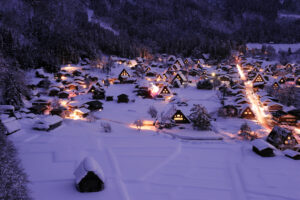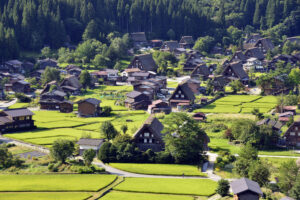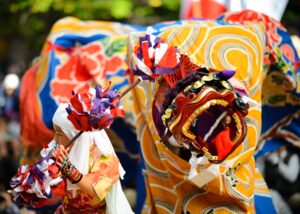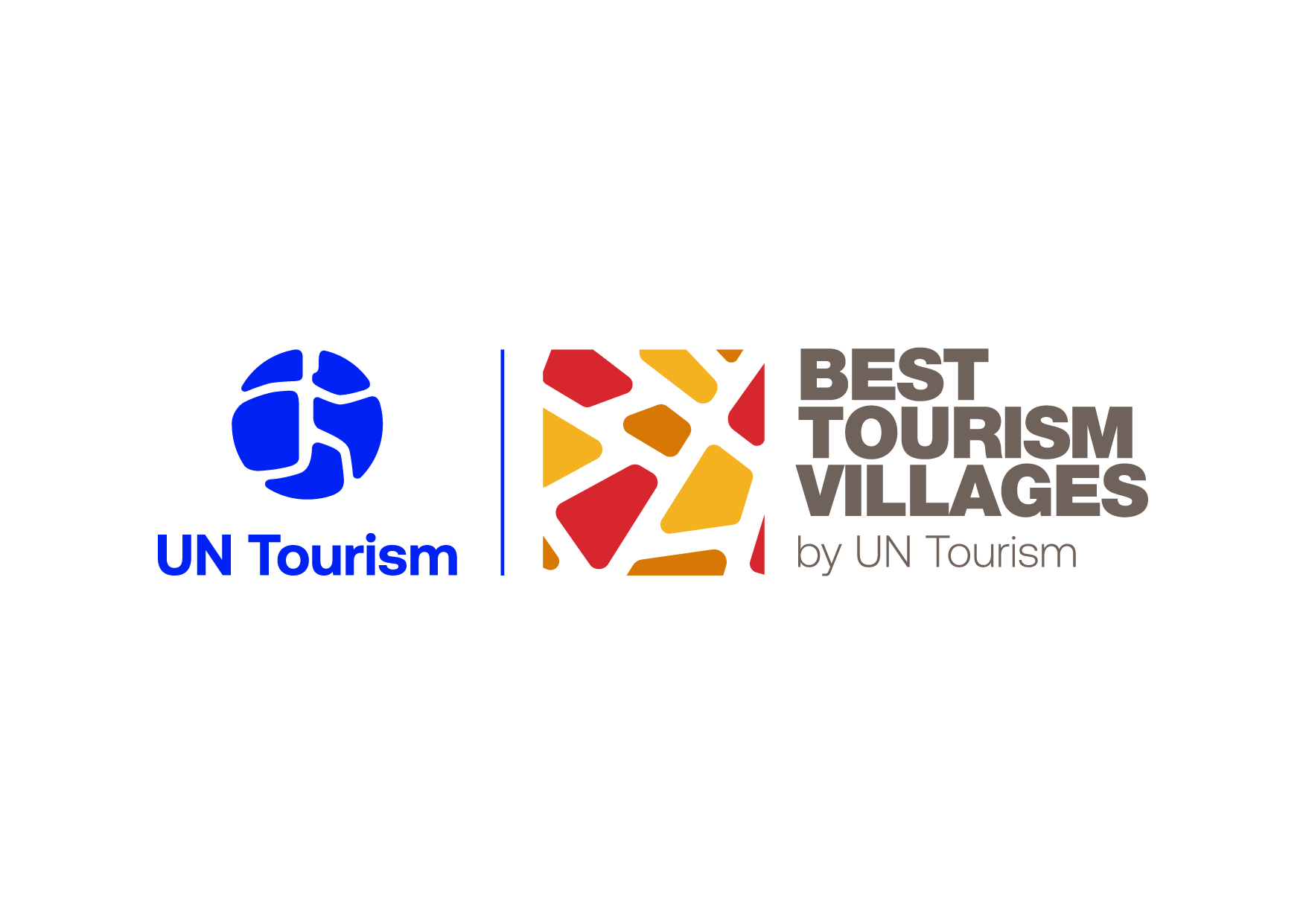Nestled within the breathtaking landscapes of the sacred Mt. Hakusan, Shirakawa Village stands as a testament to the harmonious coexistence of tradition and innovation. Situated in an area notorious for heavy snowfall and once reliant on the sericulture industry, this village has a unique story to tell.
Historically, Shirakawa Village was an enclave where the sericulture industry thrived, aided by the heavy snowfall and a challenging natural environment. It was against this backdrop that the iconic Gassho Style houses were born, designed to withstand the rigors of the snow-laden winters.
As the sericulture industry faced decline with the emergence of synthetic fabrics during the 1970s economic boom, Shirakawa Village took a proactive stance. Recognizing the value of its traditional houses intertwined with daily life, it embarked on a transformational journey, pivoting towards becoming a tourism-oriented village.
HIGHLIGHTS
-

Sustainable conservation efforts
Shirakawa Village faces the monumental task of conserving its World Heritage status, requiring an annual budget of approximately EUR 0.34 million. A particularly noteworthy aspect of this conservation is the maintenance of thatched roofs, which need replacement every 30 years, incurring substantial costs of EUR 47,000 to EUR 100,000 per roof. To secure the financial resources needed for conservation, the village has established an innovative scheme.
The village allocates 30% of its tourist parking revenues to a dedicated fund for the preservation of World Heritage villages. This initiative reflects a proactive approach to ensuring the longevity of these heritage sites. Moreover, the village’s commitment to sustainability extends to environmental considerations, as they limit tourist parking to public lots and restrict public transport buses to minimize impacts on the natural surroundings.
By creatively reinvesting tourism income into conservation, Shirakawa Village showcases a forward-thinking approach that not only preserves its cultural treasures but also minimizes environmental disruption, exemplifying the principles of responsible tourism.
-

Unique architectural heritage - Gassho-style houses
Shirakawa boasts a distinctive architectural heritage in the form of Gassho-Style houses. These traditional structures were ingeniously designed to withstand the heavy snowfall that blankets the region, making them emblematic of the village’s unique adaptation to its challenging natural environment. Originating from the need to cope with the harsh winters, Gassho-Style houses are characterized by their steeply sloped thatched roofs that resemble two hands in prayer—a design that aids snow shedding.
These houses stand as a testament to the resourcefulness of the villagers, a living connection to their ancestors’ way of life. While many regions transitioned away from traditional architecture, Shirakawa Village has fervently preserved and celebrated these architectural gems. Visitors are captivated by the timeless beauty and historical significance of these houses, providing a glimpse into the village’s rich cultural heritage.
-

Heritage Preservation
Its commitment to heritage preservation is exemplified through community-led initiatives, dating back to 1971. The “Shirakawa-mura Ogimachi Natural Environment Preservation Society,” involving all Ogimachi residents, has been instrumental in this effort. Their efforts have resulted in the creation of the Residents’ Guidelines for Protecting the Natural Environment of Shirakawa-go World Heritage, strictly prohibiting the sale, renting, or demolition of Gassho-Style houses. Moreover, the society actively engages in landscape conservation, passing down traditional skills and taking a leading role in landscape management. These collective endeavors have successfully preserved the village’s unique architectural and cultural heritage.
Shirakawa Village’s community-driven approach to heritage preservation serves as a model for others. It not only conserves but also nurtures its heritage, making it a symbol of sustainable cultural preservation within the Best Tourism Villages Network.

